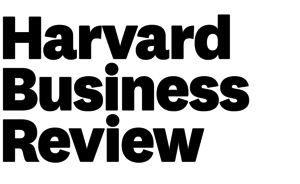Leverage Interest
Description
These resources will help you to enable and encourage employees to align their personal identities and values related to sustainability with their behaviours at work and at home, such as through the creation of participation channels and green teams.
Share this Practice on:LinkedIn
Resources
World Wildlife Fund Living Planet @ Work
The World Wildlife Foundation Canada provides guidance your green team can use on structuring roles and responsibilities within the team, setting team goals, running office campaigns, as well as resources on implementing projects specifically related to paper, waste, travel, energy, and procurement. For each of these topics, WWF Canada provides a primer to the topic, examples of common initiatives, benchmarks from other companies, and spreadsheets to conduct audits and track progress. The resources have been developed as a part of the WWF's Living Planet at Work Program.
How to form a green team
This concise guide from WWF provides practical tips for creating and operating green teams. It features a simple and streamlined five-step process that will help change agents and leaders at all levels of sustainability maturity.
Catalyst Guide to Employee Resource Groups
This comprehensive toolkit from Catalyst can help you set up employee resource groups (ERGs) to foster inclusivity and advance sustainability in your organisation. The toolkit explains what ERGs are and how they can benefit your organisation; provides actionable worksheets and questionnaires to help you better understand your organisational context and prepare the foundations for setting up an ERG; outlines a five-step plan for launching an ERG; provides examples of goals and metrics your ERG might use to track its impact; and more. This practical guidance will be most useful to sustainability, DEI, and HR practitioners.
Understanding Employee Resource Groups: A guide for Organizations
Employee Resource Group (ERG) programs play an important role in empowering and supporting community groups within organisations. This article provides a high-level explanation of ERGs and their purpose; explains the value they can bring to an organisation; and explains how organisations can support ERGs. This is a helpful and concise resource for leaders and change agents who are working to advance equity and inclusion within the workplace.
Recognizing and Rewarding the work of Employee Resource Groups
This article can help you to advance the work of employee resource groups (ERGs) and ensure that the work they do is appropriately acknowledged and valued. It explains why companies should reward ERG work; how to set them up for success; and how to formally recognise their work. It also provides recommendations to ERG organisers for creating opportunities and driving recognition.
What Black Employee Resource Groups Need Right Now
This article from Aiko Bethea explains how supporting Employee Resource Groups (ERGs) can provide representation, belonging, and safety for underrepresented and marginalised workers and strengthen your organisation. It spells out how Black ERGs - in an era of escalating racial tensions - having a growing need for equity and resources; transparency trust; mental health support; and formal validation from leadership. This is a good introductory piece for HR representatives and change agents who want to make a case for improving representation that includes tangible actions.
Although the emphasis of this article is on Black employees in North America, the lessons are similarly applicable to other historically disadvantaged and oppressed groups.
How to create a workplace green team
This article from the David Suzuki Foundation highlights the benefits of creating a workplace green team and provides a step-by-step process for building and leveraging a team of committed sustainability agents. It also explains how to handle challenges and how to start and support a remote workplace green team.
Engaging Employees to Create a Sustainable Business
Drawing on the example of Unilever, authors Paul Polman and CB Bhattacharya discuss what happens when companies encourage and share sustainable ideas and solutions among employees. For example, workers inspired by Unilever’s sustainability slogan “small actions can make a big difference" were able to save €47,500 and 9.3 tonnes of paper by reducing the end seals of tea bags by 3 millimeters. The article also explains eight important practices for engaging employees in the company’s sustainability journey.
How To Create A Green Culture and Engage Employees
This article from the Green Business Bureau highlights the benefits of introducing a 'green culture' in your workplace. The article includes a simple step-by-step guide for creating such a culture, as well as for keeping employees engaged - both of which will benefit sustainability practitioners and like-minded leaders who are in a position to inspire and introduce relevant change.
The Low Carbon Lifestyles Wheel: Behaviors, Barriers, and Benefits
This paper from Futerra, BEworks, and WBCSD can help you promote the adoption of lower-carbon lifestyles. It is based on an “Action Wheel” framework that presents four categories of individual-level action: transportation, housing, diet, and purchases. Each category is broken down into outcomes, such as “Live car-free” or “Local Food”. Each of these outcomes is then further divided into specific actions. The paper also provides guidance on addressing the many potential barriers to each action. This practical tool will be useful to anyone seeking to foster sustainability-related behaviour change among employees.
Sustainable Lifestyles: options & opportunities in the workplace
This practical guide from UNEP can help you understand how workplaces can support and motivate employees and others to practice more sustainable lifestyles. It highlights how workplaces are a good place to spark collective change toward sustainable living and provides a list of actions that can be taken in the workplace. These actions are organised around six topics: food, mobility, consumer goods, housing, leisure, and general actions. This practical resource will be especially beneficial for employee green teams, as well as sustainability and HR professionals.
Employee Resource Hub
This resource hub from the Employee Climate Action Network features a broad range of resources - including articles, videos, workshops, podcasts, guides, playbooks, and more - that can help employees to explore, support, or lead climate action in the workplace.
Share this Practice on:LinkedIn











